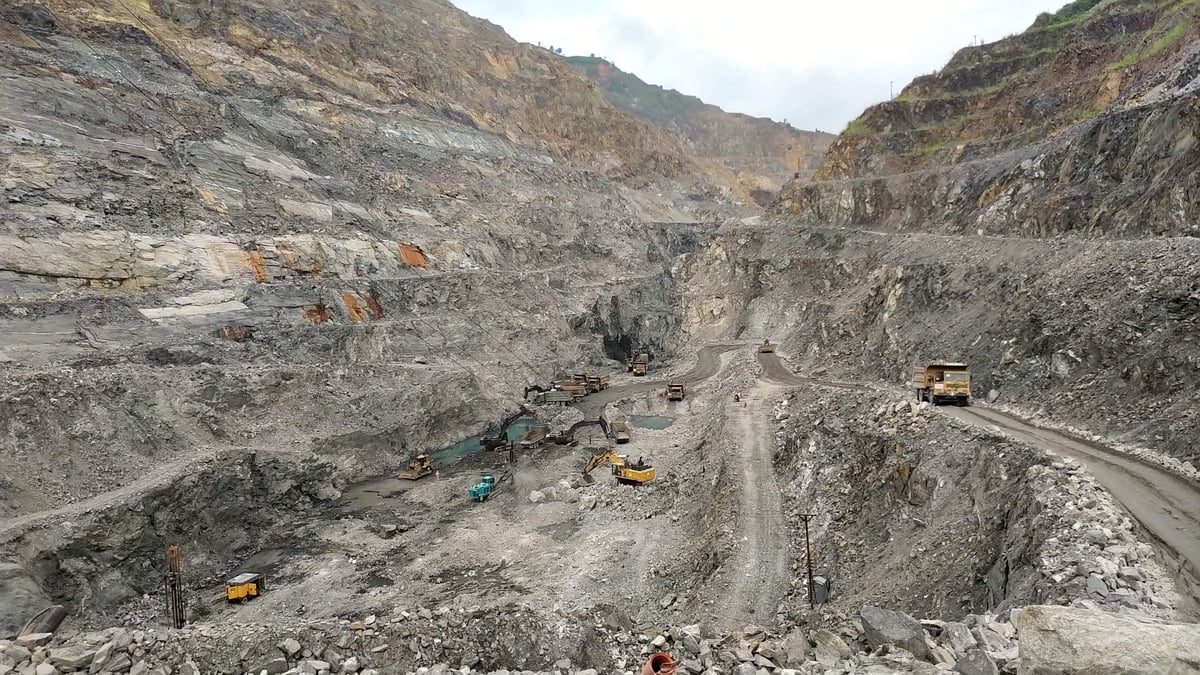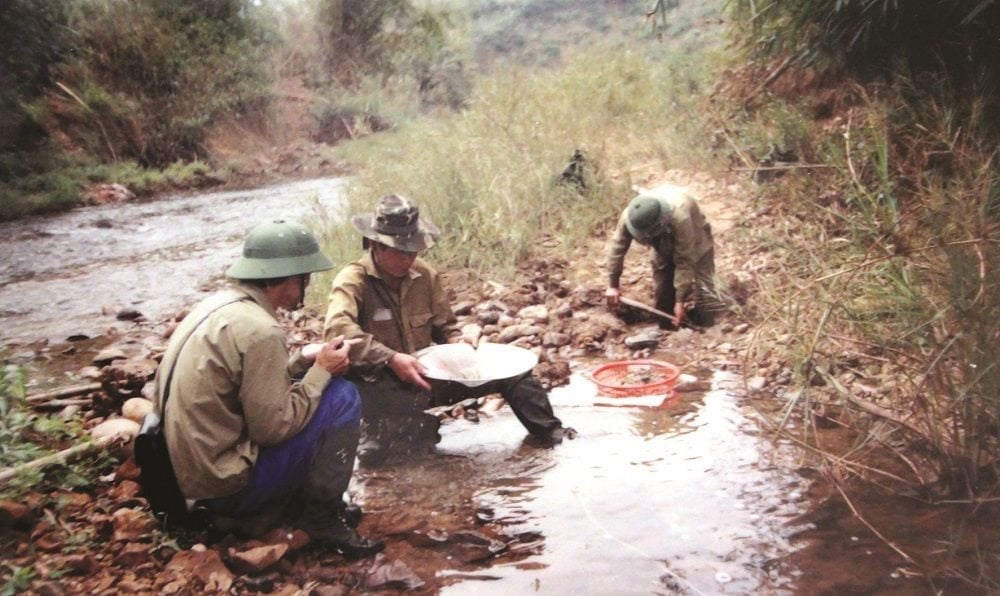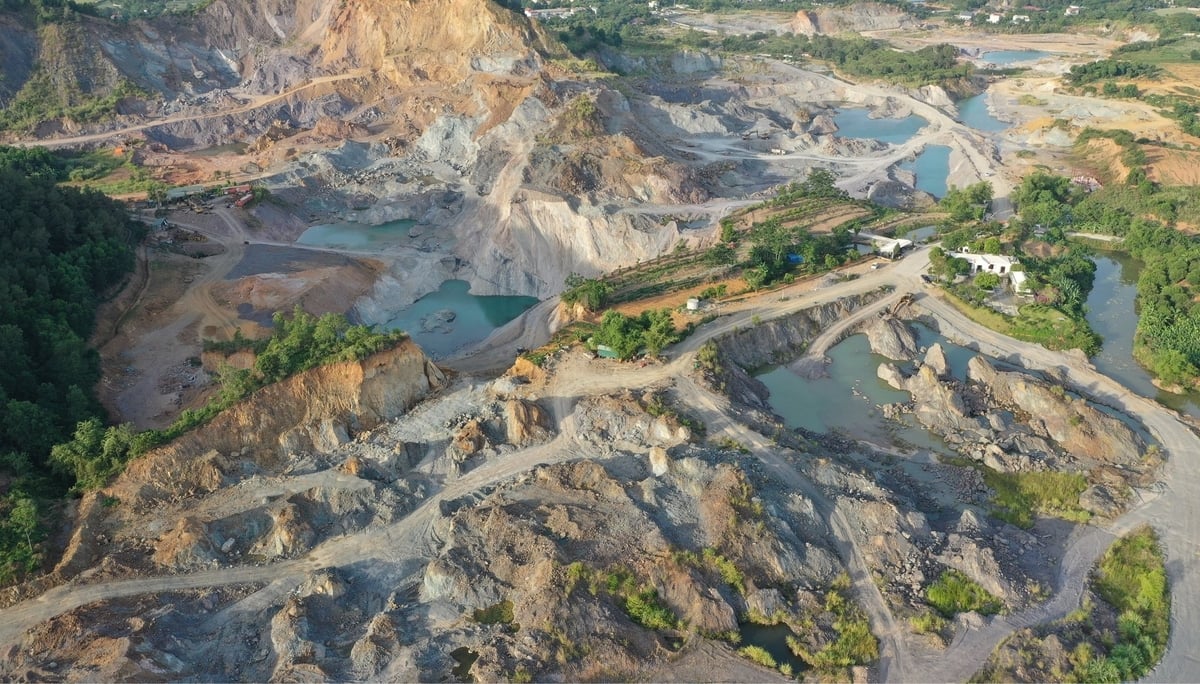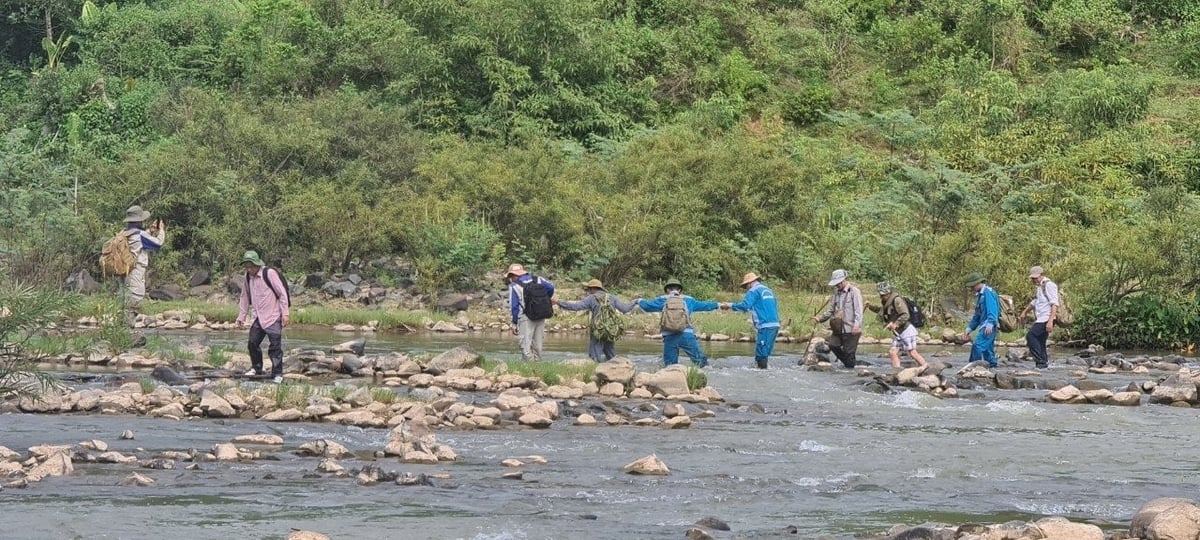November 15, 2025 | 15:01 GMT +7
November 15, 2025 | 15:01 GMT +7
Hotline: 0913.378.918
November 15, 2025 | 15:01 GMT +7
Hotline: 0913.378.918
Over eight decades, the sector has been intertwined with the nation’s development. In the early years of resistance, geologists trekked across forests and mountains to identify resources that supported production and national defense. During the reform era, the sector fulfilled its mission of surveying and assessing mineral reserves for key industries such as steel, cement, construction, and energy.

Sin Quyen copper mine in Lao Cai. Photo: Lan Chi.
On November 29, 2024, the National Assembly passed Law No. 54/2024/QH15 on Geology and Minerals, which takes effect on July 1, 2025. Together with its implementing decrees, the law establishes a new legal framework for the mining industry, marking one of the major milestones achieved by the geology sector after 80 years of development.
The law not only replaces the 2010 Minerals Law but also institutionalizes the strategic orientation outlined in Politburo Resolution 10-NQ/TW (2022) on geology, minerals, and the mining industry through 2030, with a vision to 2045. It sets the course for building a modern, transparent mining sector linked to environmental protection and a “green, circular economy”, while providing a stable legal corridor to encourage long-term investment.
According to the Office of the National Mineral Reserve Assessment Council under the Ministry of Agriculture and Environment, the law introduces major reforms that create practical opportunities for mining enterprises. One notable change is the extension of the priority period for mining license applications.
Organizations and individuals that have completed exploration and had reserves approved now have up to 36 months, six times longer than under the 2010 law, to submit mining license applications. This provides companies more time to finalise investment procedures, secure financing, and implement environmental safeguards, reducing bureaucratic risks and easing project rollout.
The law also prioritizes the use of advanced technology in mining operations. Enterprises are encouraged to adopt modern, environmentally friendly equipment suited to each deposit, maximizing resource recovery while minimizing waste and environmental impact. This shift fosters investment in sustainable practices and supports the transformation toward “green mining”.

Geologists from the Rare and Radioactive Geology Division (Vietnam Department of Geology and Minerals) conduct a field survey in Nam Giang district, Quang Nam province, in 1994. Photo: Phu Quang.
In addition, the law promotes the circular economy by allowing recovery of minerals from waste piles at closed mines and encouraging the use of tailings and waste rock in land rehabilitation or industrial production. This approach reduces pollution, generates new revenue streams for companies, and aligns Vietnam with global trends in resource recycling, carbon reduction, and sustainable mining.
Shared benefits for businesses and communities
Beyond driving technological renewal, the law lays the groundwork for transparent management and balanced benefits.
Senior specialists at the National Mineral Reserve Assessment Council emphasize that the legislation creates conditions for a more transparent investment environment, ensuring benefits are shared between businesses, the state, and local communities. A centralized national database on geology and minerals will be established by the Ministry of Agriculture and Environment, integrating data nationwide for both scientific research and business decision-making.
Once operational, investors will have quick, reliable access to information on reserves and exploration conditions, overcoming the previous fragmentation of data at the provincial level. By 2030, Vietnam aims to complete an integrated national database on geology and minerals, a key tool for planning and investment.

The Law on Geology and Minerals lays the foundation for a more transparent investment environment. Photo: Lan Chi.
The law also enshrines the rights and responsibilities of communities in mining areas. A portion of mining revenues, taxes, and fees will be allocated locally to support infrastructure, environmental protection projects, and social welfare programs.
Communities are entitled to participate in consultations on safety and environmental measures, and local labor is to be prioritized in mining projects. This dual approach promoting sustainable corporate investment while safeguarding community interests, lays a foundation for long-term harmonious and sustainable development.
The 2024 Law on Geology and Minerals opens a new chapter for Vietnam’s mining industry, more modern, transparent, and sustainable. Geologists, who have left their footprints from high mountains to distant islands, continue to play a central role in resource security and national development.

Geologists have left their footprints across the nation, from remote mountains to distant islands. Photo: Phu Quang.
In an era of deepening globalization, a comprehensive and consistent legal framework strengthens Vietnam’s competitiveness in attracting mining investment. The new law not only continues the legacy of 80 years of geological development but also addresses pressing global demands for circular economy practices, environmental stewardship, and sustainable growth, ensuring resource security while contributing to national economic and social progress.
Translated by Linh Linh

(VAN) The Ministry of Agriculture and Environment aims for a breakthrough in green growth, digital transformation, climate change adaptation, and a trajectory toward net-zero emissions by 2050.

(VAN) Vietnam’s development orientation for its agriculture and environment sectors toward 2045. shaped by the guiding philosophy of General Secretary To Lam, places people at the core and sustainability at its foundation.
![Clean data - Bright trust: [Part 6] Overcoming data 'gaps'](https://t.ex-cdn.com/nongnghiepmoitruong.vn/608w/files/huytd/2025/11/15/3249-anh-chup-man-hinh-2025-11-14-230516-231344_707.jpeg)
(VAN) Lack of land data in many communes forces Lao Cai province to mobilize all resources, overcome obstacles, and accelerate progress to complete its land database ahead of the assigned deadline.

(VAN) Lam Dong province has surpassed its goal of planting 71 million trees during the 2021-2025 period, reaching more than 113% of the assigned target and mobilizing over VND 408 billion from socialized funding sources.

(VAN) The President of the University of Agriculture and Forestry under Hue University expressed confidence that Vietnam’s agricultural landscape is poised for major breakthroughs, with digital agriculture playing a pivotal, transformative role.

(VAN) The Ministry of Agriculture and Environment has just issued an Action Plan to implement the Project for Low-Emission Crop Production for the 2025-2035 period, with a vision to 2050.

(VAN) Water resource management in Viet Nam is undergoing a significant transformation, moving from administrative control to modern, digitized, and sustainable governance. This shift is anchored by technology, data, and social participation.